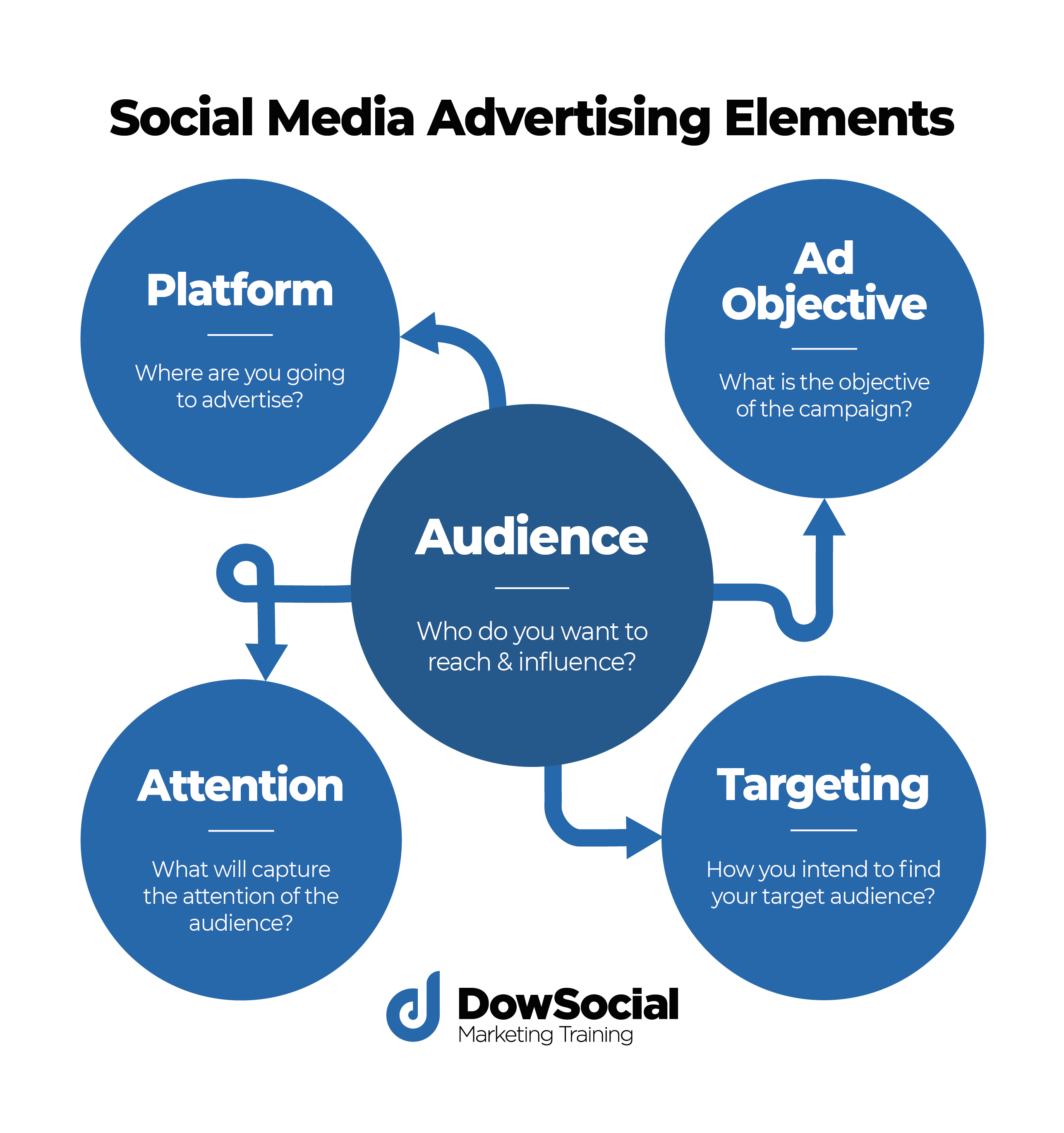The difference between profitable and expensive paid ad campaigns are rooted in the critical decisions you make when getting started with social media advertising.
These decisions are those that affect the following elements of your social media advertising campaigns:
- Audience
- Platform
- Objective
- Targeting
- Creative
 Getting Started With Social Media Advertising
Getting Started With Social Media Advertising
We have collated some guidance on the thought processes we use with clients when making critical decisions for each element.
Defining Your Target Audience
A paid ads campaign’s first step is defining your target audience.
The clearer you define your target audience, the more likely you are to run successful ad campaigns.
This is because they should be the focus of every decision you make.
The target audience drives the decision for which platforms to advertise on; their preferred sales process guides the selection of objectives and inspires the creative process, language and visuals.
Choosing The Right Platform
Most mainstream social media platforms, including Meta (Facebook & Instagram), LinkedIn, Twitter, Tik Tok and Pinterest, have a self-service platform that allows you to create, target and launch adverts on their platform.
The best place to advertise is where your target audience is most active and likely to engage with your product or service.
Some platforms naturally appeal to business-to-consumer products (B2C), such as Meta and Tik Tok. Others, such as LinkedIn, are set up to accommodate business-to-business (B2B) businesses.
This will vary depending on your audience; for example, many B2B focused businesses have successfully advertised on the Meta advertising platform.
Start by researching your audience and looking at your industry to see where competitors or businesses with similar audiences are finding success.
Selecting The Right Advertising Objective
When you start setting up your advertising campaign, the first decision social media platforms ask you is to define your objective.
These vary from platform to platform but can be loosely grouped into the following
- Awareness (reach, impressions, ad recall)
- Interest (engagement, video views, website visits, lead form completion)
- Conversion (purchases)
This can be loosely mapped to the traditional sales funnel, which identifies that customers go through a journey through awareness, interest, decision and action before they buy a product or service.
Some people may know you and be ready to buy, whereas others need to be warmed up.
Pick your objective based on where the people you want to reach are on their journey with your company.
Targeting The Right People
Each platform has its targeting options, dependent on the platform’s functionality, the data they hold and how they deliver the adverts.
The correct targeting will depend on how these correlates to the product or service you are selling and the individual quirks of the targeting systems and algorithms.
Typically, you will get a choice to target people in one of three ways.
- Data collated by the platform is sometimes referred to as “saved audiences” (Meta) or “Audience Attributes” (LinkedIn). This can include interests, job titles, groups or other data from the platform.
- Data collected from actions with your business is sometimes referred to as “custom audiences” (Facebook) or “audiences” (LinkedIn). This covers things such as visitors to your website, customer lists, and people who have engaged with your social media, watched a video or filled out a contact form.
- Lookalike Audiences are a blend of the first two audience types with the social media platform using actions/interactions with your business to identify people that “look like” the people making these actions within the platform.
The audience you select will depend on your target audience, your platform and where in the sales funnel your audience is.
To use Meta as an example, saved audiences and lookalike audiences are those that have not heard of your business before and are at the top of your sales funnel.
Whereas custom audiences would contain people with at least some awareness of your business, meaning that they would be focused further down your sales funnel.
The level of awareness would determine exactly which level of your sales funnel.
Capturing Attention with The Right Creative
When marketers refer to “creative” in the context of social media advertising, we mean the images, videos, and text to be used in the advert.
This is vital as it is the visible part of the advertising process that your target audience sees and hopefully reacts to.
Each platform has its preferred content types, sizes and styles; these are developed in line with the audience that uses the platform and how it functions.
The type of creative that will work will once again be determined by your target audience’s motivations, actions and values.
Your content should be focused on capturing the attention of your target audience so they stop scrolling to engage with your advert.
It should clearly communicate your message and clarify what is in it for the user consuming your content.